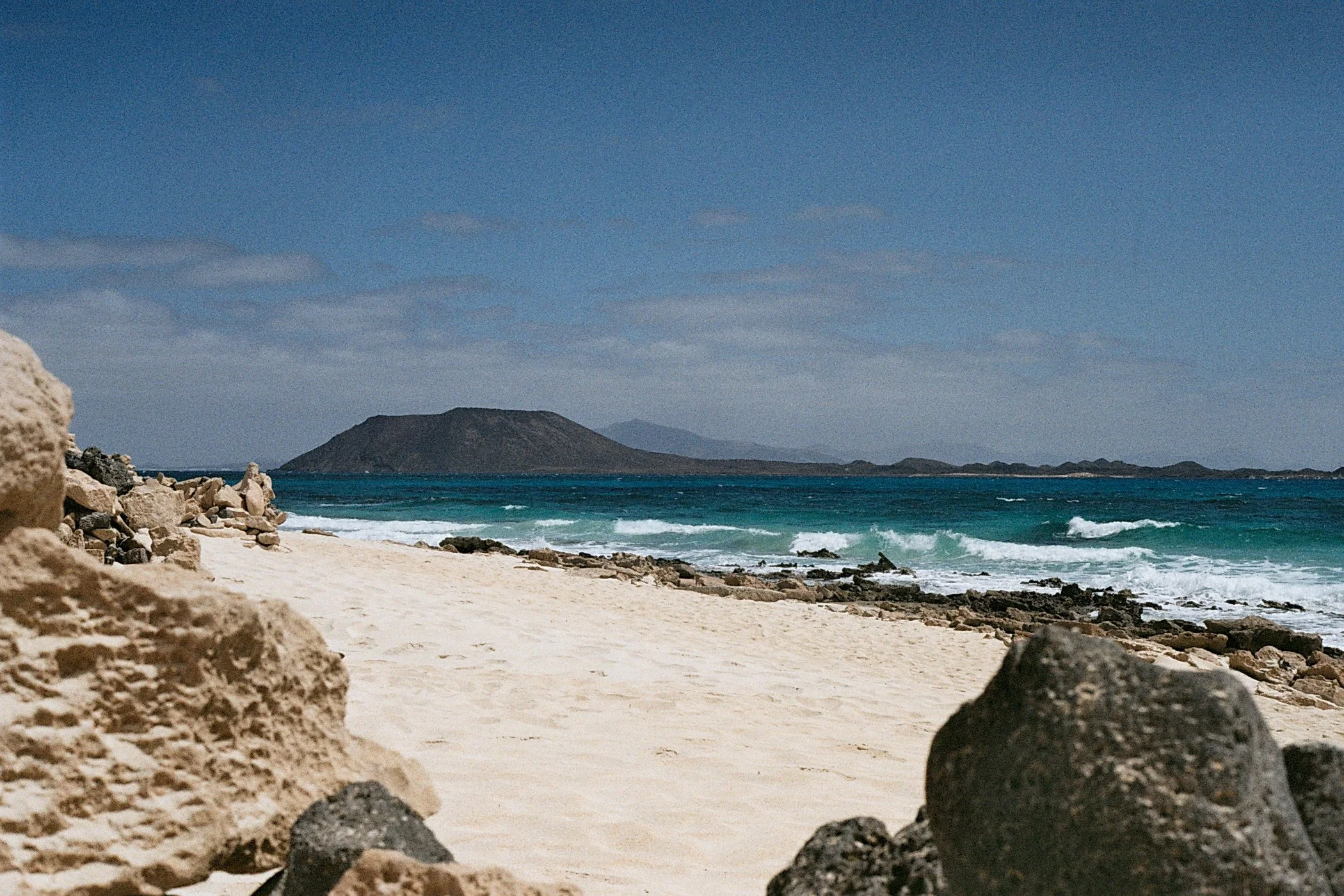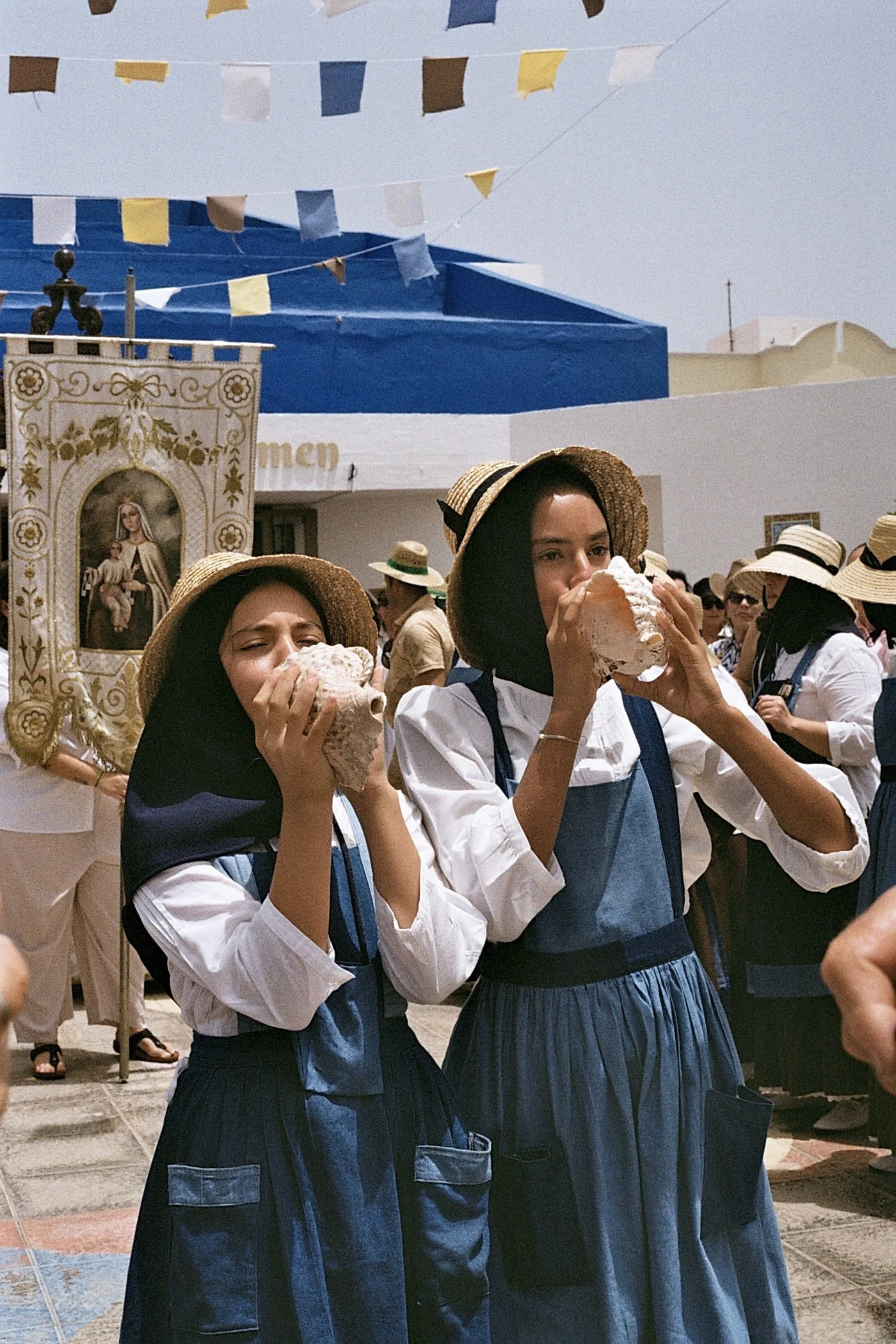Fuerteventura: La Fiesta Nuestra Señora del Carmen
I recently returned to Fuerteventura, where my mother has lived for the past five years. Over time, I’ve come to feel a strong connection with the island, to its dark volcanic landscapes, the surrounding ocean which holds a maternal presence and the community of people who call this place home. On this visit, my arrival coincided with the festival of Nuestra Señora del Carmen, patron saint of sailors and fishermen, whose feast day is one of the most important celebrations on the island. Though I had heard of it before, this was my first time experiencing it firsthand and immersing myself in the majarero (islander) traditions.
Corralejo, the northern town where the procession takes place, has its own layered story. Once a small fishing village, it was rapidly transformed in the 1970s by the rise of tourism. Today, traces of that transformation are everywhere, half-built hotel complexes abandoned in the desert, reminders of unchecked development and shifting economic tides. At the same time, Corralejo has become an international hub: a blend of holidaymakers, European migrants, surfers drawn by the waves and spiritual seekers attracted by the island’s reputation for tranquility. These juxtapositions, holiday makers, thriving surf culture, ecological activism and the scars of overdevelopment, all form the the complex relationships between locals, tourists and the nature.
The procession began at the central church, with a lengthy sermon and devotional songs for the pescadores, the fishermen who depend on the Mother’s protection. The music was earthy, with a pagan resonance, musicians played classical Spanish guitars, abalone shell castanets, bone necklaces worn as percussion instruments. These materials, drawn directly from the environment, blurring the line between devotion and ecology. It felt as if the island itself was woven into the act of worship. Locals in traditional dress sang and danced under the midday sun, evoking a kind of ancestral memory. The Mother was paraded through the streets with adoration and chants of “¡Viva, viva, viva del Carmen!” before being placed on her boat and carried out to sea on the gentle turquoise sea.
What struck me most was how deeply this resonated with traditions I have witnessed in India. The offering of the Mother to the sea reminded me of Hindu rituals where rivers and oceans are honoured as embodiments of the divine feminine. Conch shells (shankhas) sounding over the water echoed their use in Vedic ceremonies, I was quite surprised but it made sense to me, their sound purifies and uplifts energy and space through vibration. The similarities in tradition and ceremony spoke to me of our shared humanity, there is always so much more that connects us than separates us, and worship of the divine, in any form, in any tradition is shared in our communal ancestors and is under threat of being lost. For me personally, the timing was profound: I had come to the island to seek my own mother’s blessing before returning to India, and here I found myself part of another maternal blessing, a convergence of cultures across continents.


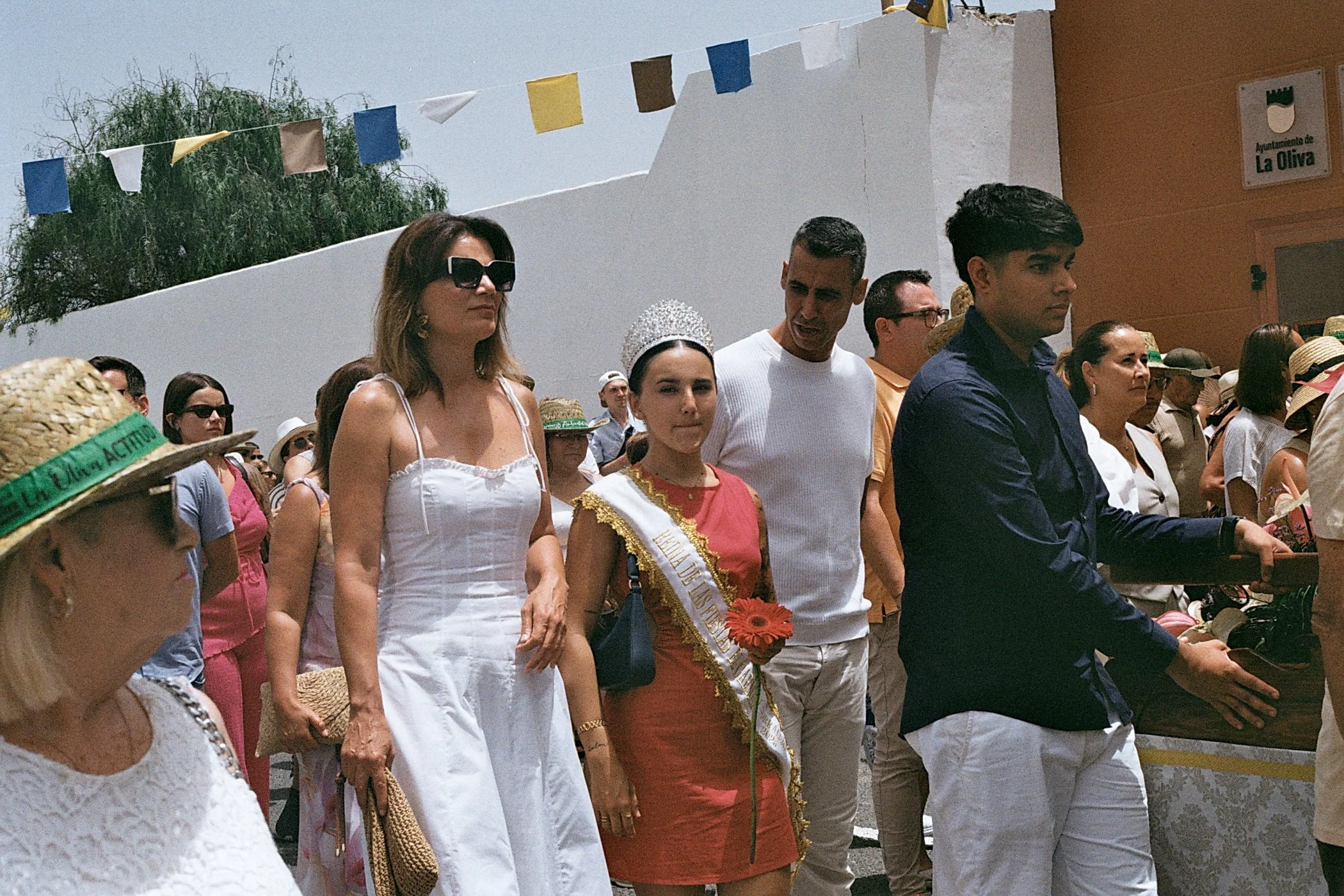
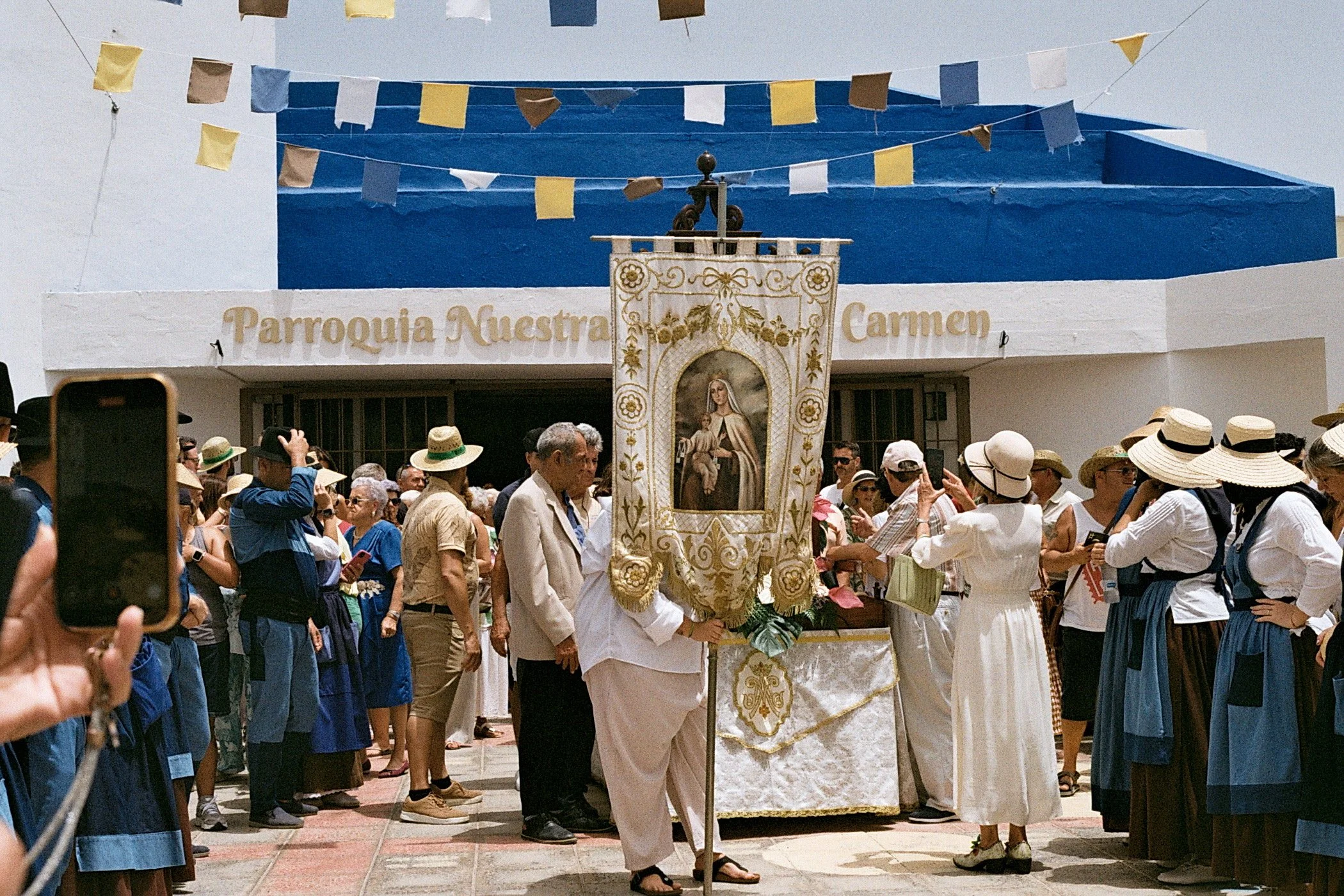
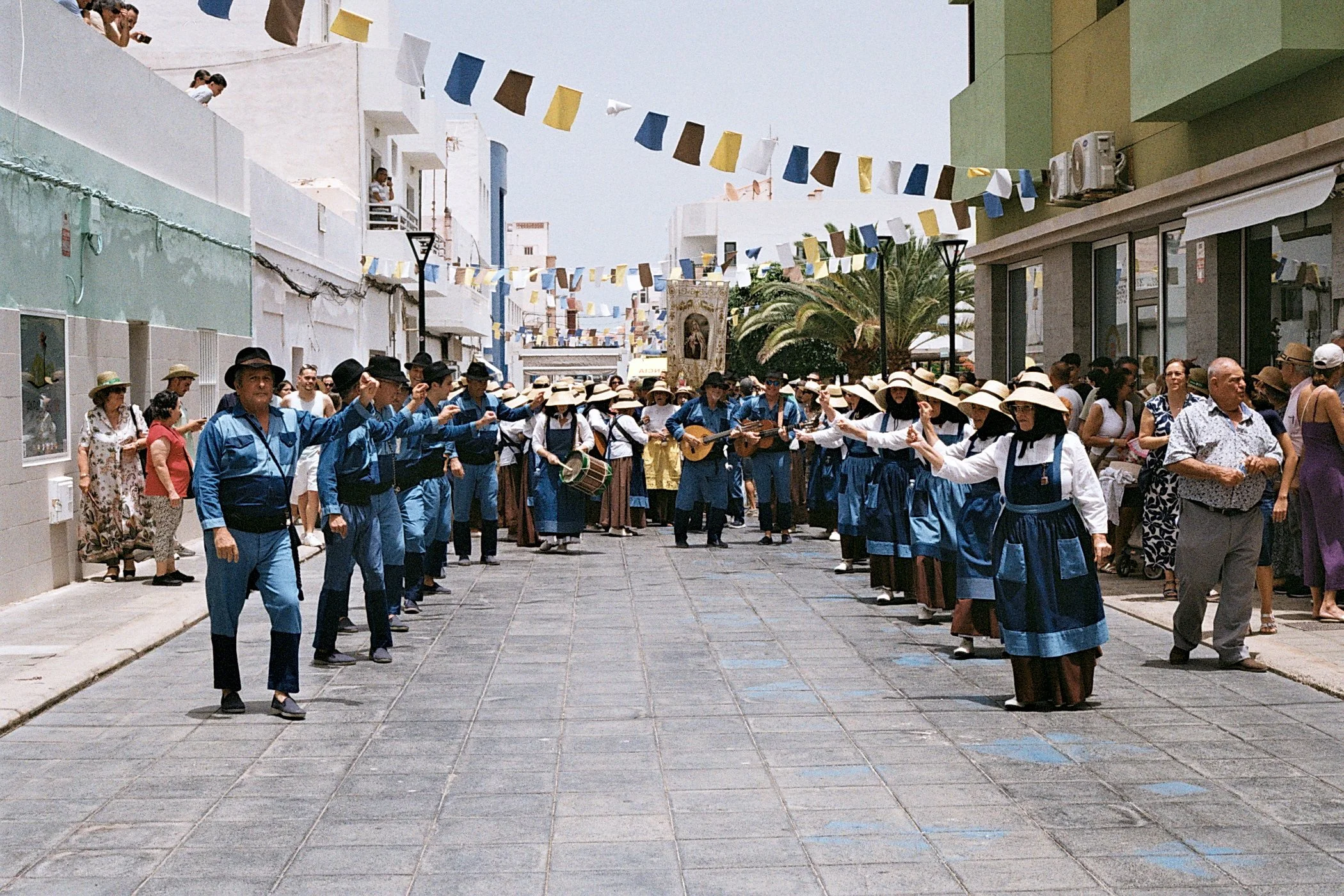
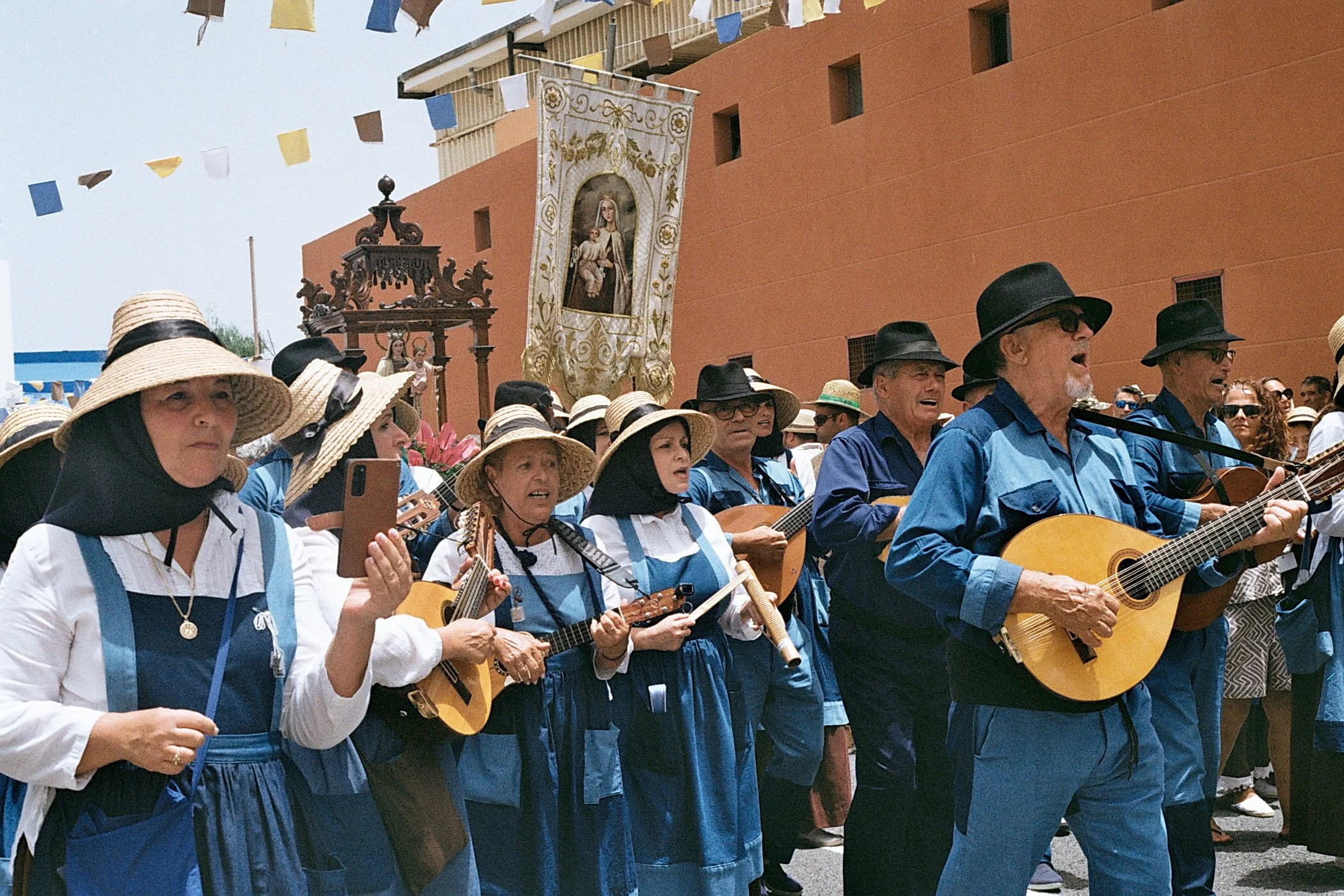


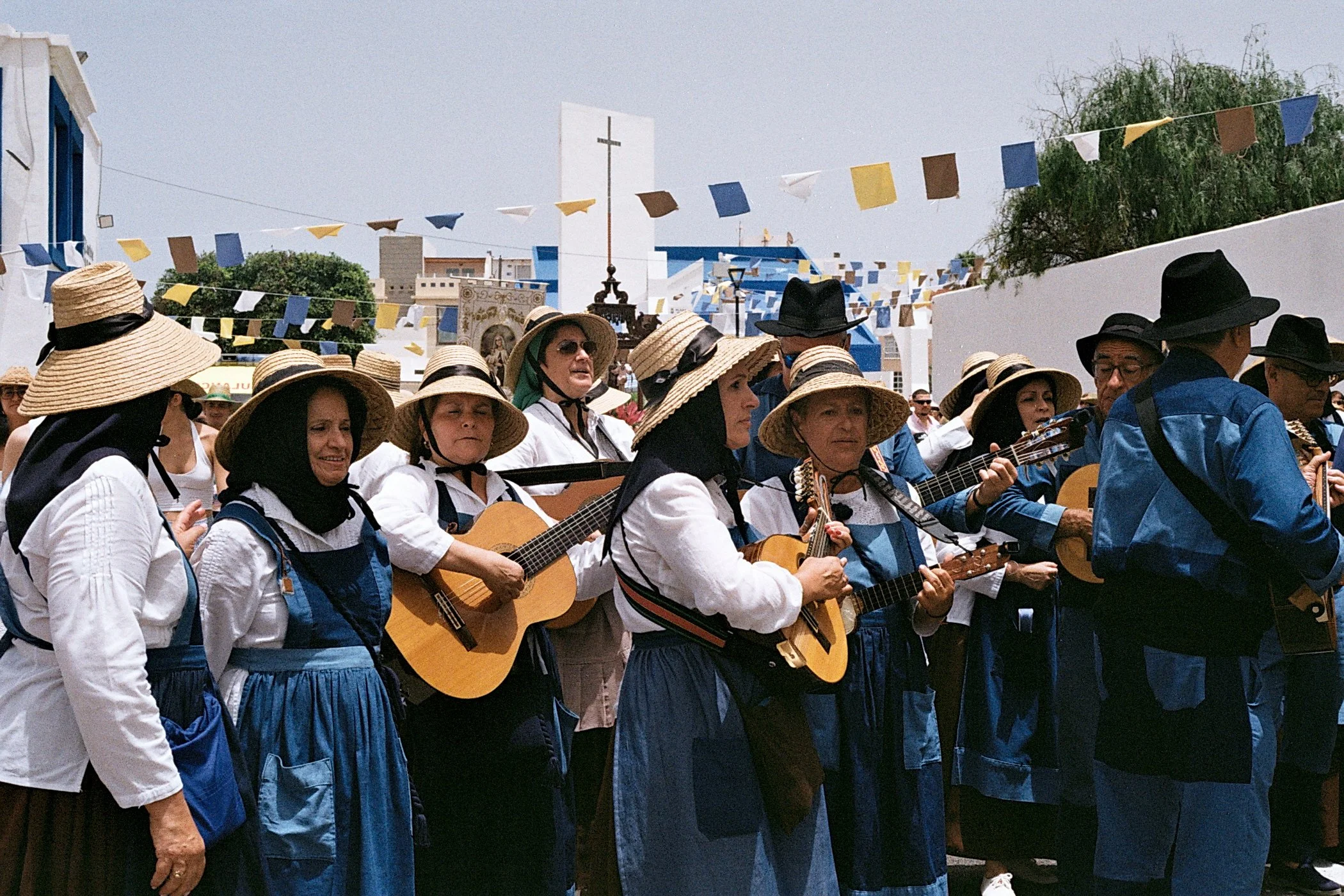
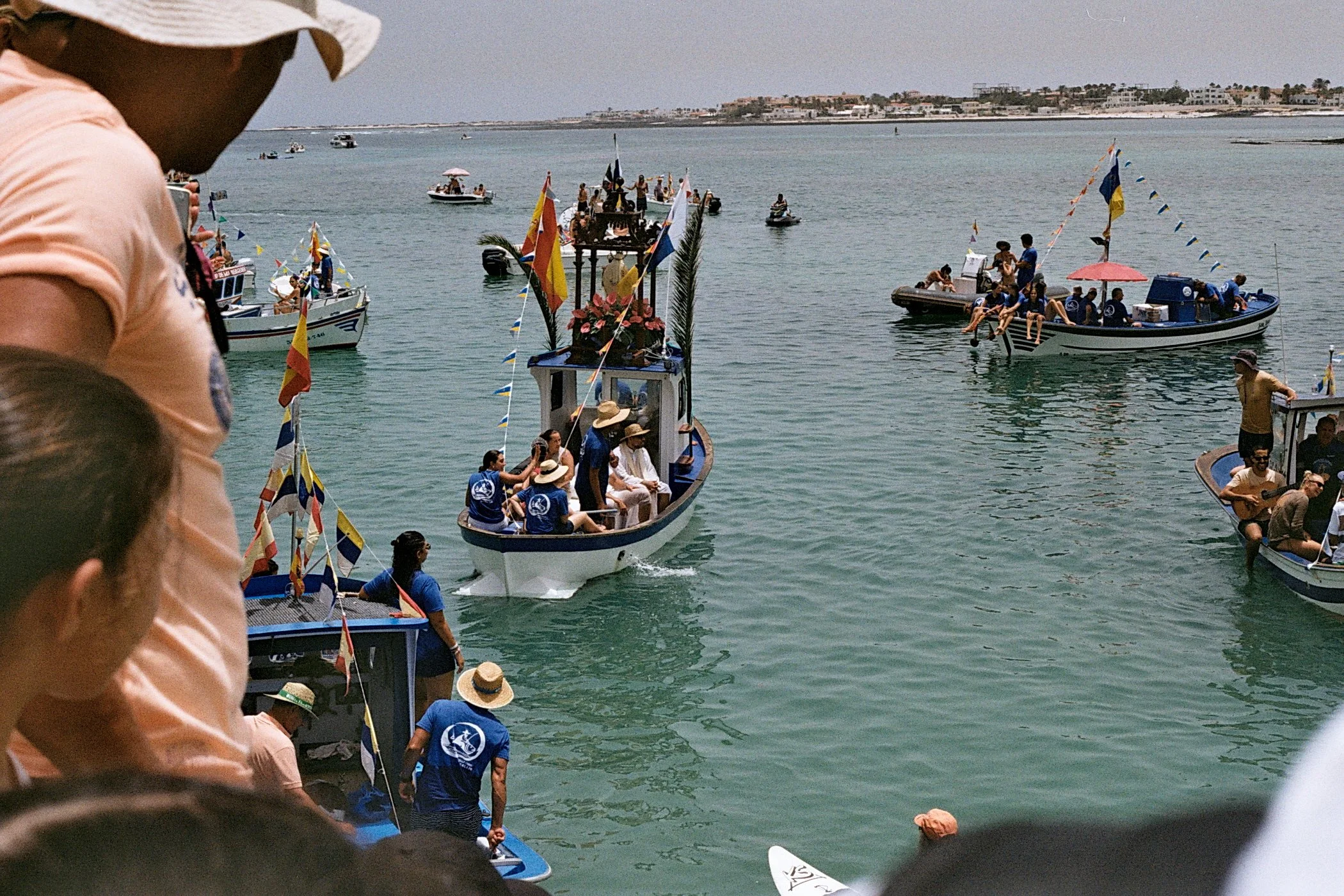
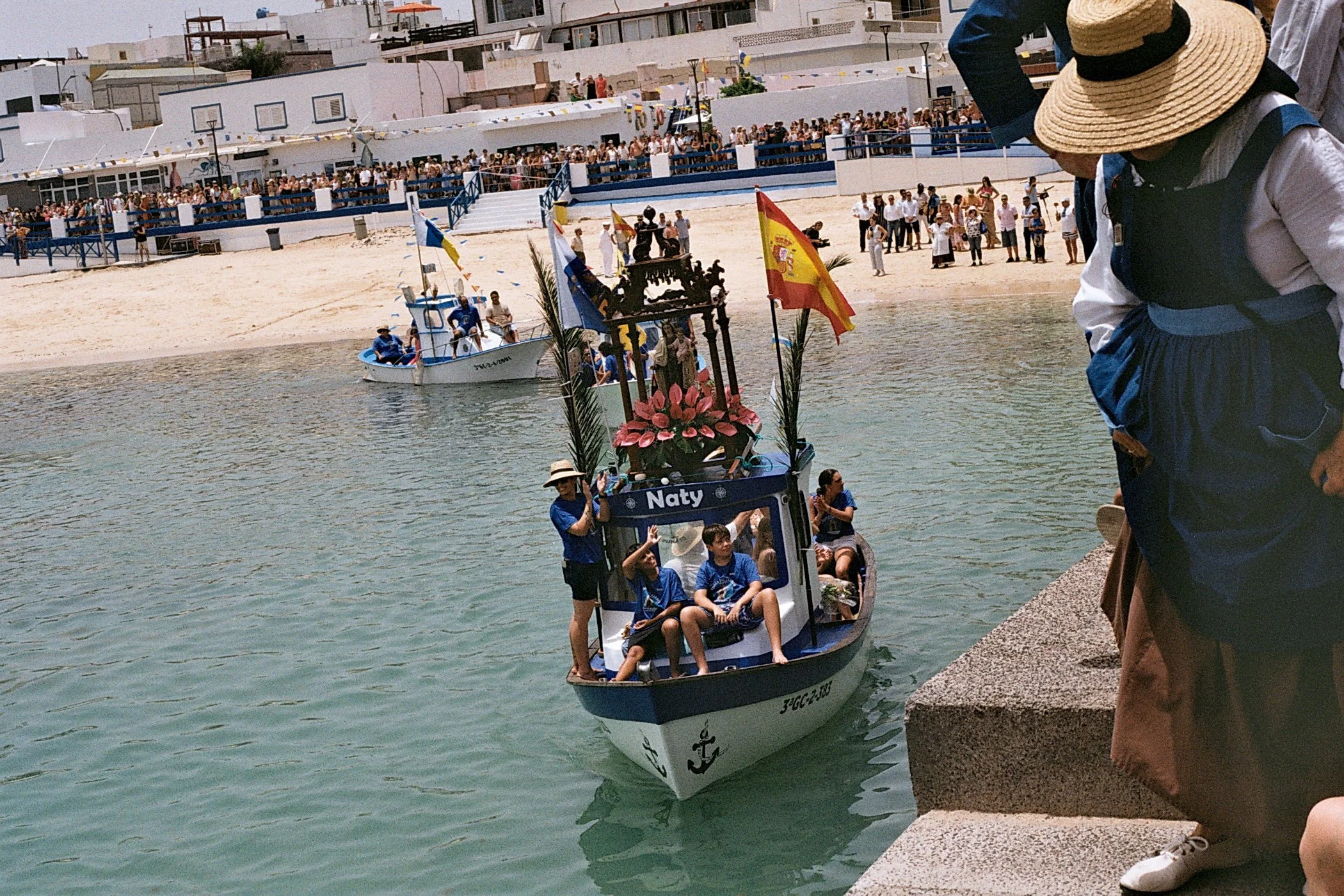
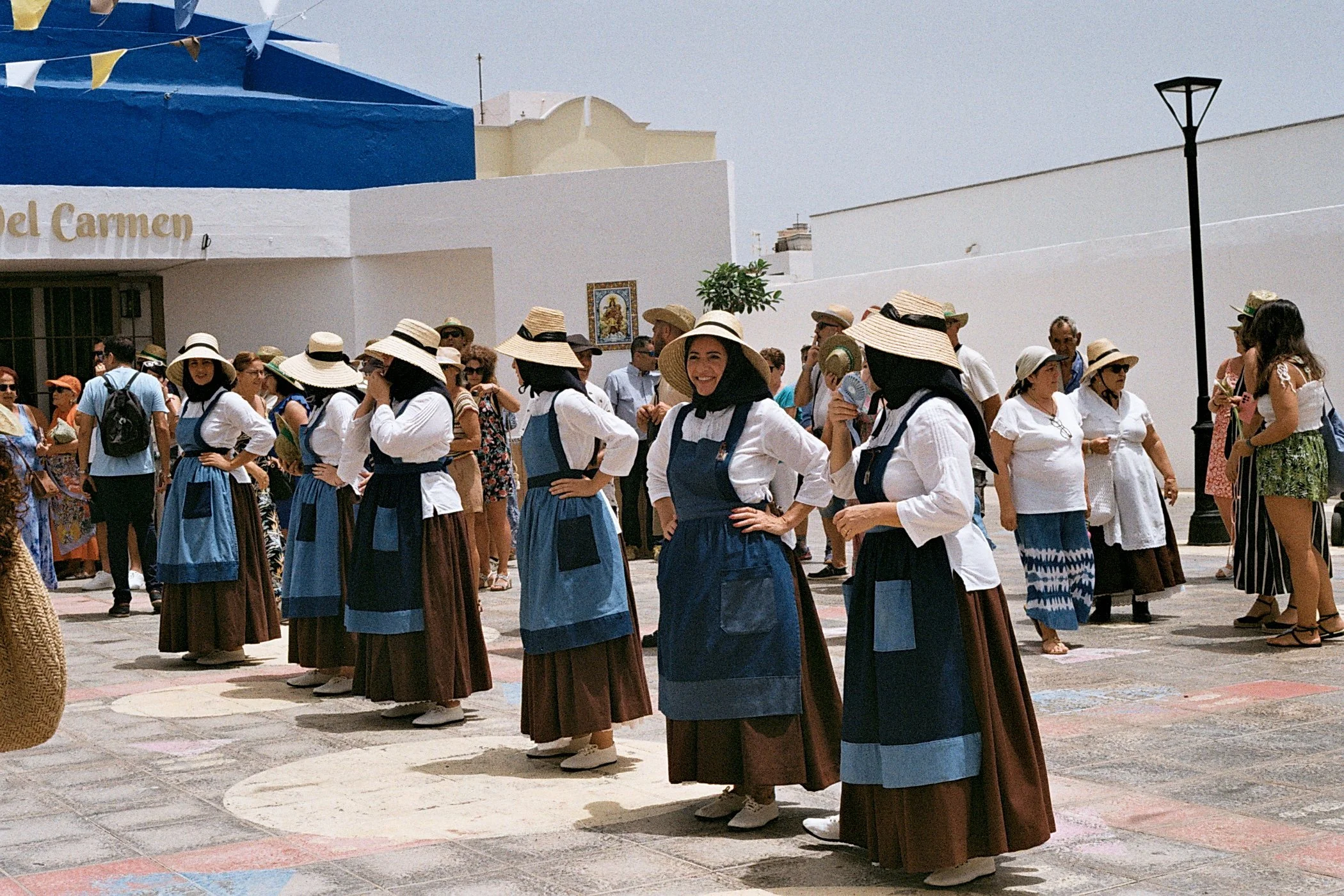

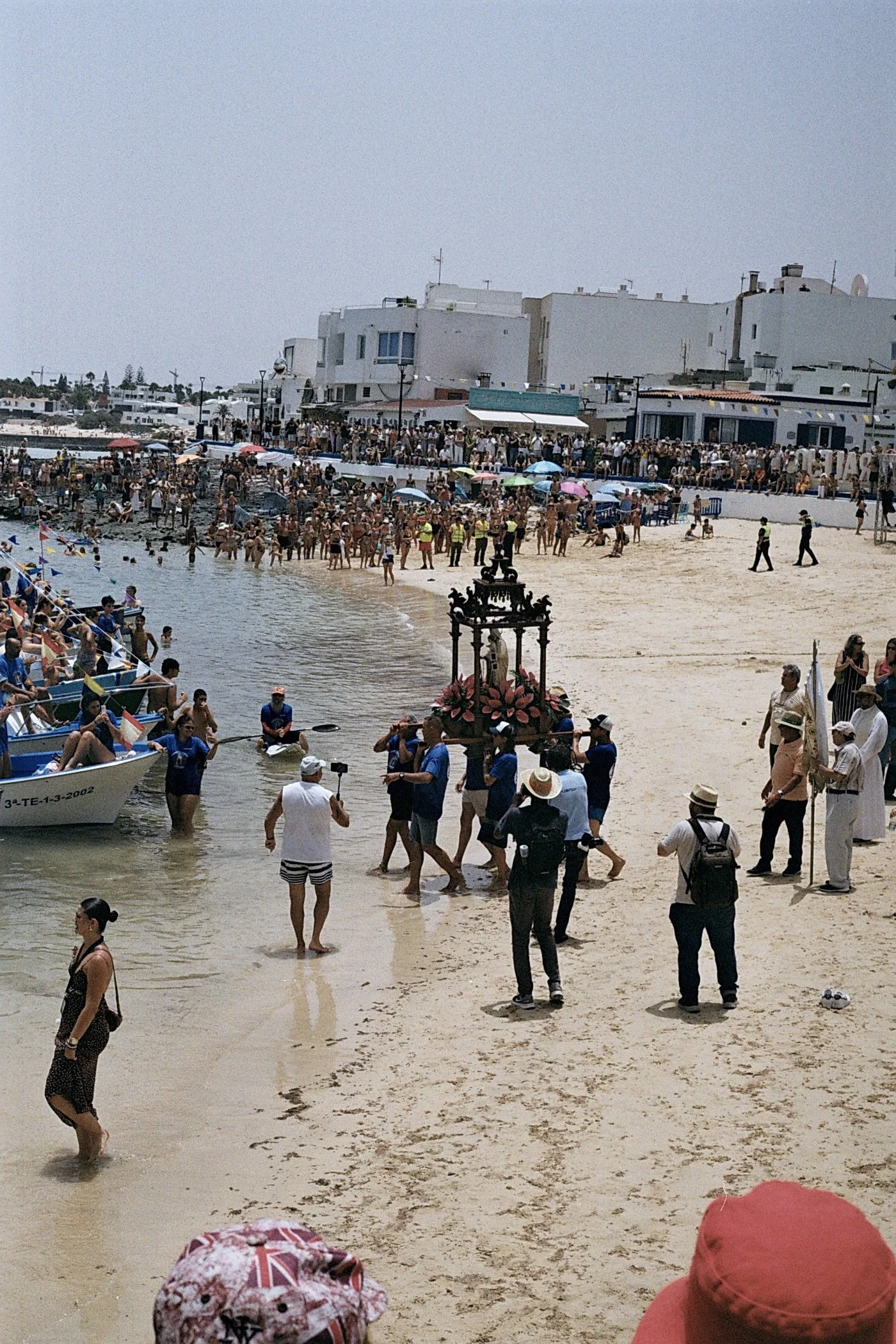

Witnessing this procession reminded me how, across the world, communities create rituals that link them to their environment, to the divine and to their ancestors. This has very much been lost in Britain, although there are contemporary movements that attempt to revive of folk traditions, the brutality of which our ancestors were persecuted for performing them leaves deep scars and lost knowledge.
In Fuerteventura, as in India, these practices are not relics but living, evolving forms of devotion. In Europe, such expressions of communal spirituality are increasingly rare, often supplanted by secularism or commercial festivals. Yet here, the majareros’ celebration was authentic, profoundly human and alive.
Moving forward, I want to explore more of these connections between East and West, how so-called pagan traditions have been absorbed into Christianity, and how rituals of the land and sea continue to shape contemporary worship. In Fuerteventura, I found a reminder that the divine is not confined to temples or churches, but lives in the relationship between people, culture and the natural world that sustains them.

